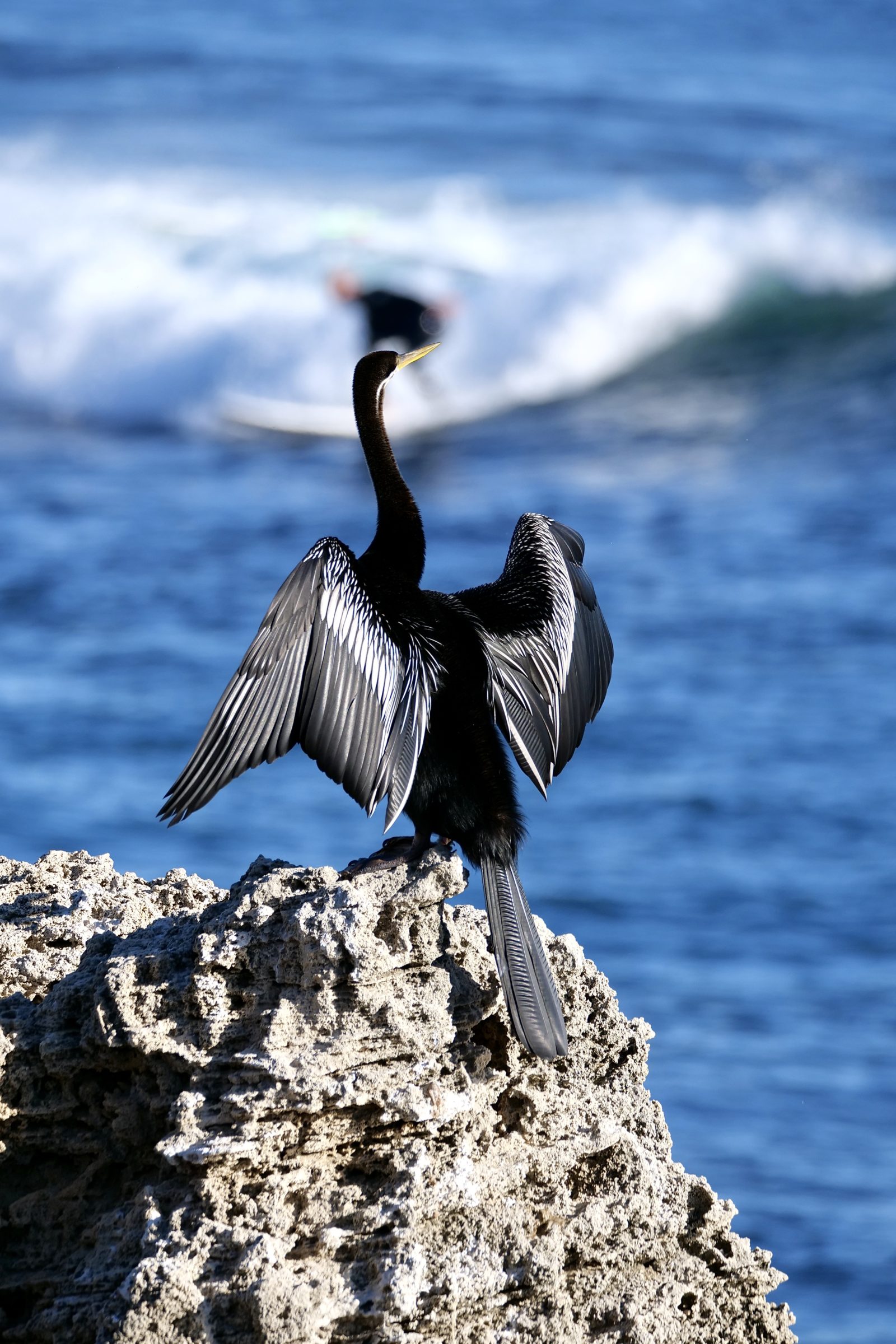Pictured above: a snake bird, perched above Cottesloe Reef’s landward edge, with surfer-dude in background.
(more formally, the “snake bird” is an Australasian darter, Anhinga novaehollandiae)
Below them: there be dragons!
(photo is copyright Doug Spencer, taken at 3.33 pm on 03 July 2022)
Defined by the iconic forests of golden kelp (Ecklonia radiata), the Great Southern Reef (GSR) is an interconnected underwater system fringing more than 8000 km of Australia’s southern coast; from Kalbarri, Western Australia to the NSW/Queensland border.
16 million Australians’ live within 50km of the GSR yet few know it exists.
The italicised words come from a wonderful website which seeks to make many more Australian citizens wake up to the reality that The Great Barrier Reef is not the “enormous, globally significant Australian reef system”, but one of two reef systems which merit that description.
Cottesloe Reef is part of the GSR.
Less than half an hour away from Perth’s CBD, it is closer to Perth’s GPO than is South Australia’s Brighton Beach to Adelaide’s GPO.
Adelaide’s Brighton Beach is lovely in its own right, but its more placid waters are much less dynamic than Cottesloe’s, and nowhere near as rich in marine life.
Cottesloe Reef is within an easy two minute walk of the nearest bus stop.
Even without ever getting one’s feet wet at Cottesloe Reef, a visitor can surely sense that this place is very alive.
Walkers on Cottesloe Groyne can hardly fail to see how clear/how lively is the water, that a lot of photosynthesis is going on, and that there must be a reason for birds’ constant presence.
Standing on groyne or cliff top, my beloved and I have never failed to see cormorants and gulls.
We have often seen terns and darters.
Sometimes, we have seen oystercatchers and an osprey.
More than once, whales have passed by or lolled about, within a short paddling distance of the reef.
Unsurprisingly, however, the richest array is below, and generally visible only to those who dive into the reef’s swirling waters.
Divers have a good chance of seeing sea dragons.
Click here to see and learn more about Phyllopteryx taeniolatus, the common sea dragon, aka “weedy sea dragon”.
Some lucky divers on Cottesloe Reef encounter Phycodurus eques, the leafy sea dragon; the only member of its genus, it is one of the ocean’s most exquisite, most “unlikely” and most superbly camouflaged inhabitants.
Sea dragon videos have been shot on Cottesloe Reef, but the finest footage I have ever seen of leafy sea dragons comes from another wonderful Western Australian place – Bremer Bay, a little more than 500 ks southeast of Perth.
Click this to see it, and learn a little more.

I thought you would mention Simon Nield’s wonderful “Dragons” song.